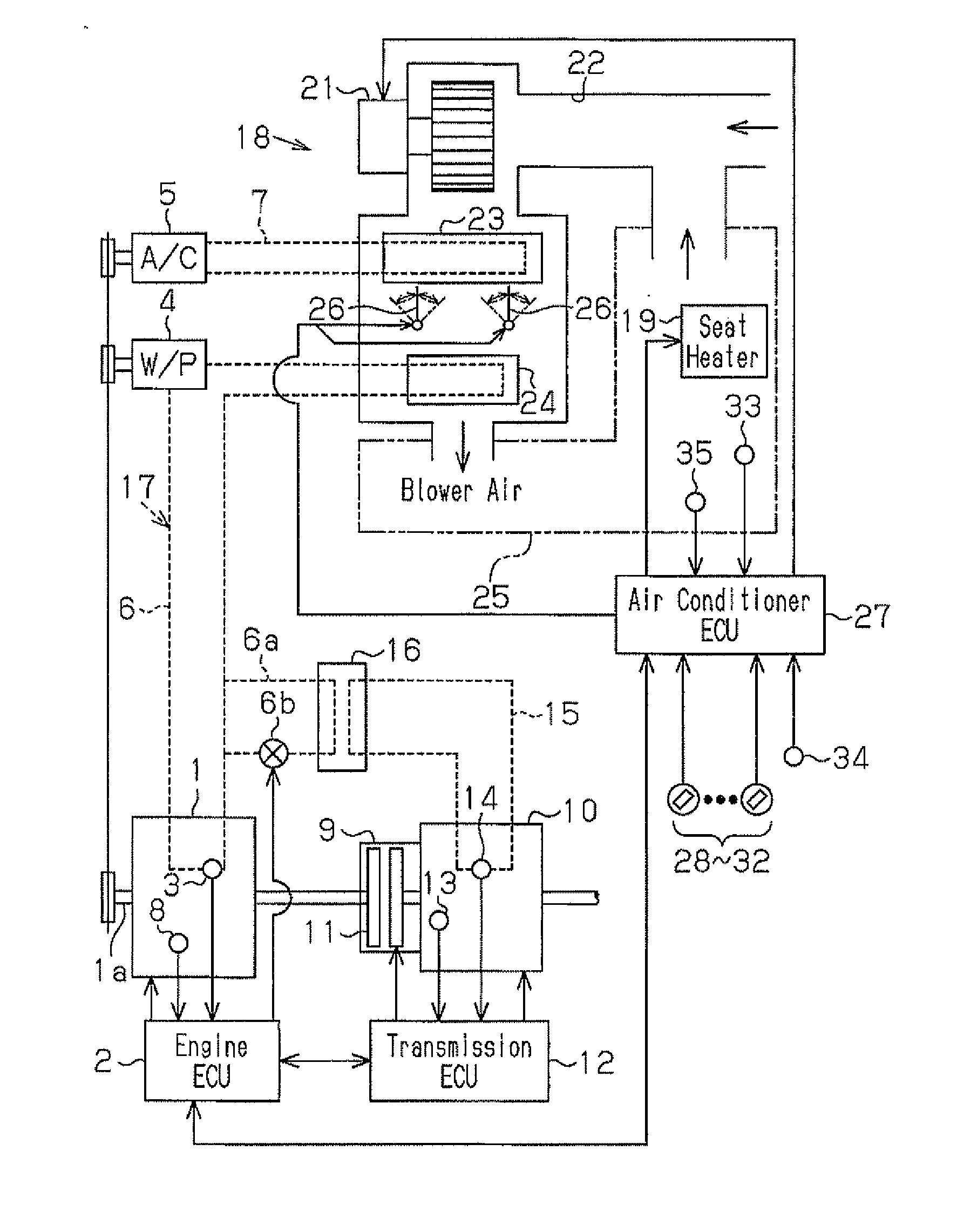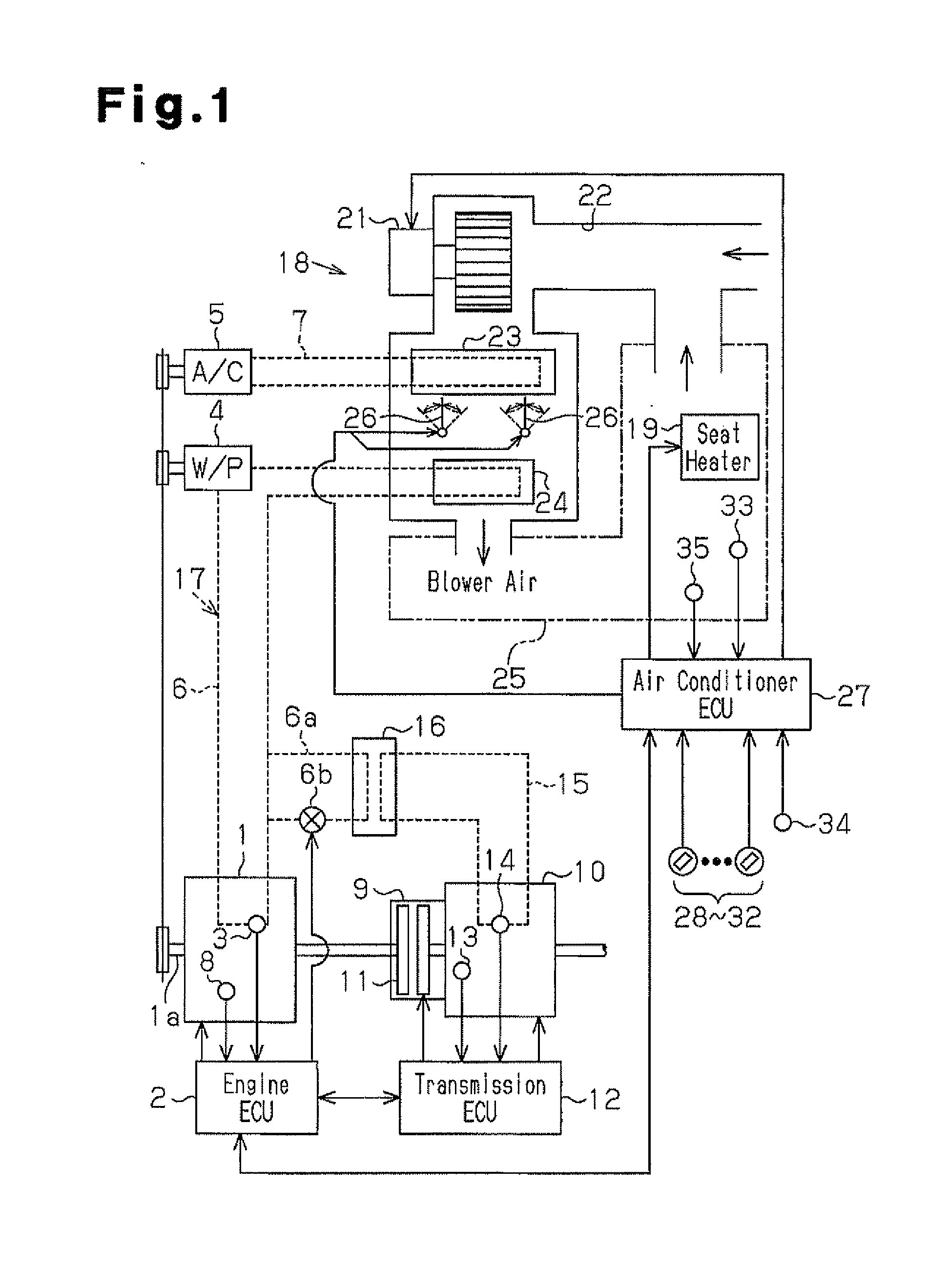Vehicular control device
- Summary
- Abstract
- Description
- Claims
- Application Information
AI Technical Summary
Benefits of technology
Problems solved by technology
Method used
Image
Examples
first embodiment
[0070]A first embodiment of the present invention, which is a control device for an automobile, will now be described with reference to FIGS. 1 to 6.
[0071]In an automobile, as represented in FIG. 1, a transmission 10 is connected to an output shaft 1a of an engine 1, which is mounted as a motor. The automobile runs as rotational force from the engine 1 (via the output shaft 1a) is transmitted to wheels through the transmission 10. The transmission 10 has a torque converter 9 and a lockup clutch 11. The torque converter 9 transmits the drive force from the engine 1 to a transmission mechanism, which is provided in the transmission 10, through oil. The lockup clutch 11 is capable of connecting the engine 1 and the transmission mechanism directly to each other. The lockup clutch 11 and the transmission mechanism of the transmission 10 are operated using hydraulic pressure produced by transmission oil, which is hydraulic fluid in the transmission 10.
[0072]The automobile also includes a ...
second embodiment
[0137]A second embodiment of the present invention will hereafter be described with reference to FIG. 7.
[0138]In the automobile in which thermal efficiency of the engine 1 is improved by reducing the size of the engine 1 or ensuring automatic stopping and restarting, transmission oil used by the transmission 10 may be considered as a component aside from the passenger compartment 25 that must be heated when at a low temperature.
[0139]The transmission 10 achieves such an operating state that the transmission 10 contributes to reduction in fuel consumption of the engine 1 when the temperature of the transmission oil increases to a value (which is, for example, a determination value H1) that is high to a certain extent compared with the normal value at the time when the engine 1 is held in a stopped state. Accordingly, to decrease the fuel consumed by the engine 1, the flow control valve 6b of the branch line 6a communicating with the circulation path 6 of the heat exchanging device 17...
third embodiment
[0151]A third embodiment of the present invention will hereafter be described with reference to FIG. 8.
[0152]In an automobile in which thermal efficiency of the engine 1 is enhanced by reducing the size of the engine 1 or performing automatic stopping and restarting, the lubricant oil used by the engine 1 may also be cited as a component aside from the passenger compartment 25 that must be heated when at a low temperature.
[0153]In the engine 1, the viscosity of the lubricant oil decreases when the temperature of the lubricant oil increases to a value (which is, for example, a determination value H2) that is high to a certain extent compared with the normal value at the time when the engine 1 is in a stopped state. This reduces the resistance of the lubricant oil to the rotation of the engine 1, thus allowing the engine 1 to operate efficiently. The engine 1 is thus allowed to operate in a state effective for decrease of the fuel consumption by the engine 1. Accordingly, to reduce th...
PUM
 Login to View More
Login to View More Abstract
Description
Claims
Application Information
 Login to View More
Login to View More - R&D
- Intellectual Property
- Life Sciences
- Materials
- Tech Scout
- Unparalleled Data Quality
- Higher Quality Content
- 60% Fewer Hallucinations
Browse by: Latest US Patents, China's latest patents, Technical Efficacy Thesaurus, Application Domain, Technology Topic, Popular Technical Reports.
© 2025 PatSnap. All rights reserved.Legal|Privacy policy|Modern Slavery Act Transparency Statement|Sitemap|About US| Contact US: help@patsnap.com



